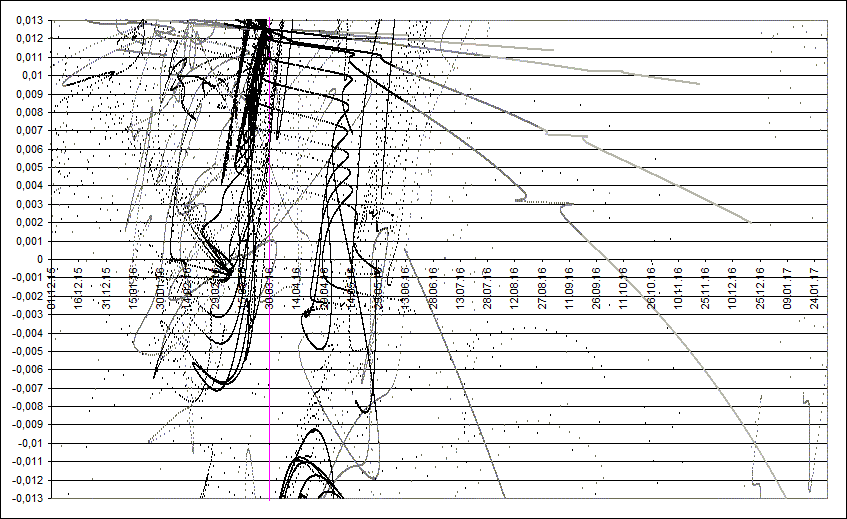252P-ids 2016: prediction of activity
to the list of predictions

Fig. 1. Space-temporal projection of 252p-ids trails parts onto their minimal distance passages in 2016 (correspondence between colours of the particles and their ejection velocities can be seen here).
In 2016 the comet 252P LINEAR passes its perihelion, and the distance between its and the Earth orbits will be 0.01248 AU. The results of the comet particles orbital evolution show that 1915, 1921 and 1926 trails pass quite close to the Earth, so on 28-30 March weak meteor activity is possible, with ZHR perhaps no more than 5-10, from a radiant RA=77.7°, Dec=-15.9°. The activity occurance is most probable during 11-18 UT on March 28. The radiant is situated in the sky close to the Mu Leporis star, therefore it is the evening shower. Low radiant declination makes its available mainly for observers in southern hemisphere and on equator, the useful observations are possible up to ~20°N latitude. The entrance velocity of shower meteors is only 15.5 km/s, so they should be distinctly slow. They average brigthness is expected to be slow. The gibbous waning Moon will rise about midnight and will not make any interference in the evening time.
References
1. "Comet's dust 2.0" program by S. Shanov and S. Dubrovsky. [Used for orbital computations.]
2. Lyytinen E, van Flandern T. "Predicting the strength of Leonid outbursts", 2000, Icarus, P. 158-160.
3. Kasuo Kinoshita, http://jcometobs.web.fc2.com/ [Orbital elements of the comet 252P LINEAR]
References
1. "Comet's dust 2.0" program by S. Shanov and S. Dubrovsky. [Used for orbital computations.]
2. Lyytinen E, van Flandern T. "Predicting the strength of Leonid outbursts", 2000, Icarus, P. 158-160.
3. Kasuo Kinoshita, http://jcometobs.web.fc2.com/ [Orbital elements of the comet 252P LINEAR]